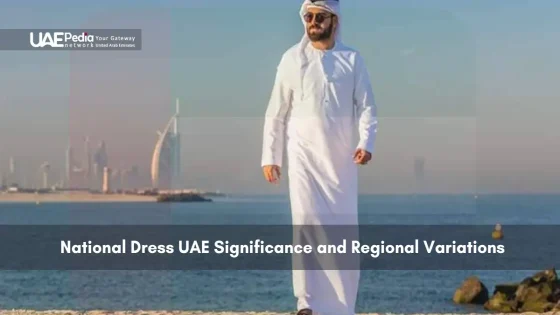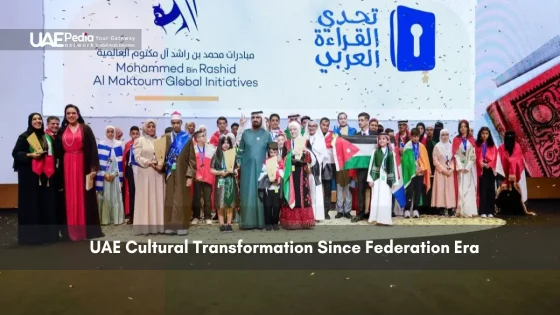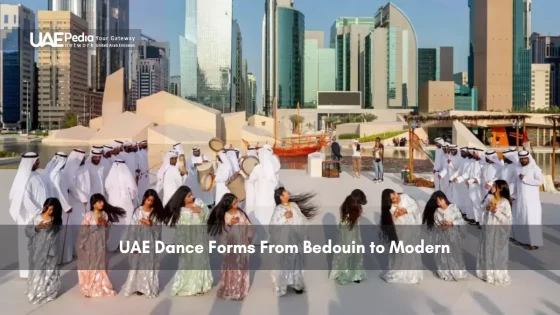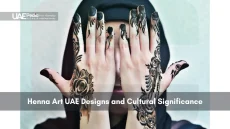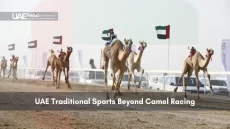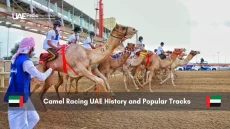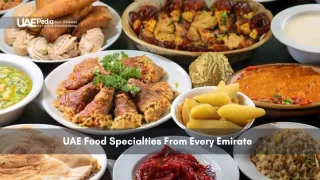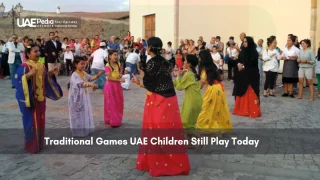What if a single garment could tell the story of a nation’s past, present, and future? Across the seven emirates, flowing white robes and elegant black coverings aren’t just clothing—they’re wearable narratives of belonging.
The kandura (for men) and abaya (for women) serve as living symbols of unity. Their crisp lines and minimalist designs mirror the desert landscape—practical for harsh sun yet elegant enough for diplomatic meetings. You’ll notice these styles everywhere, from spice-scented souks to glass-walled skyscrapers.
But there’s more beneath the surface. Each fold honors Islamic values of modesty while celebrating Arab identity. The choice of fabric weight? A nod to seasonal shifts between scorching summers and cooler winters. Even the agal (the black cord atop men’s headwear) has roots in Bedouin survival—originally used to tether camels.
We’ll explore how these garments evolved from desert necessity to global icon. Along the way, you’ll discover subtle regional twists: embroidery patterns in Fujairah, sleeve lengths in Abu Dhabi, and fabric choices in Dubai’s humidity.
- Cultural compass: How clothing reflects shared values and adaptation
- Desert DNA: Practical design meets timeless elegance
- Hidden dialects: Regional variations that map to local landscapes
Understanding the Legacy of the National dress UAE
Picture this: endless dunes where every stitch tells survival stories. The flowing garments we see today began as Bedouin innovations – lightweight fabrics shielding skin from sun, loose cuts allowing airflow during desert treks. These designs weren’t just practical; they whispered “we belong to this land.”
Bedouin Blueprints in Modern Threads
That ankle-length robe you spot in markets? Its silhouette hasn’t changed much since camel caravans ruled trade routes. Bedouin weavers used sheep’s wool for winter versions – a trick still seen in northern emirates’ thicker fabrics. The distinctive neckline patterns? Originally clan identifiers, now regional signatures.
Woven Pride, Stitched Identity
Today’s emirati clothing balances tradition with tomorrow. Designers add subtle embroidery to classic robes, while keeping modesty central. “Our attire isn’t just fabric – it’s our ancestors’ voice,” says a Dubai tailor whose family has stitched robes for three generations. Youth wear them with smartphones tucked in hidden pockets, proving traditions adapt without fading.
Notice how men’s headscarves stay firmly anchored – a nod to the agal’s original purpose as a camel tether. Women’s garments retain flowing layers that dance like desert winds, yet now feature breathable tech fabrics. This isn’t nostalgia; it’s cultural pride worn daily.
Exploring Regional Variations and Unique Styles in the Emirates
Imagine crossing seven emirates in a day—each stop reveals new twists on classic garments. From coastal breezes to mountain valleys, local clothing adapts to geography while keeping cultural roots intact. You’ll spot this living tapestry in sleeve lengths, embroidery details, and fabric choices that whisper regional stories.
Desert Threads, Modern Needles
In Abu Dhabi, men’s robes often feature shorter sleeves—a practical choice for the capital’s urban heat. Head northeast to Fujairah, and you’ll find women wear abayas with intricate mountain-inspired embroidery. “Our stitches map the Hajar peaks,” explains a Ras Al Khaimah designer blending Bedouin motifs with laser-cut patterns.
Dubai’s humidity shapes fashion too. Locals favor lighter fabrics than their desert neighbors, while Ajman artisans add seashell accents to traditional garments. Even holiday attire shifts subtly—check regional celebrations to see golden threads in Sharjah’s festive wear versus Al Ain’s earth-toned elegance.
Climate isn’t the only influencer. Northern emirates preserve wool-lined winter clothes from Bedouin times, while southern regions embrace breathable cottons year-round. Yet every variation shares a common thread: pride in heritage that bends without breaking. As one tailor puts it, “We’re not changing the style—we’re adding chapters to its story.”
Emirati Men’s Attire: Kandura, Ghutrah, and Elegant Accessories
Step into any majlis gathering, and you’ll witness a symphony of crisp white robes. The kandura anchors Emirati men’s wardrobes—its ankle-length cut and lightweight cotton engineered for desert survival. But look closer: every fold hides smart adaptations for modern life.
Seasonal Variations and Material Choices
Summer versions use paper-thin fabric that breathes like second skin. Winter brings wool-blend robes in deeper hues—charcoal or coffee tones replacing bright whites. “We switch fabrics like the desert shifts sands,” laughs a Dubai tailor. Sleeve lengths adjust too: shorter for urban heat, longer for mountain chill.
Accessorizing with Agal, Ghafiya, and Bisht
The ghutrah headscarf does triple duty: sun shield, sand barrier, style statement. That iconic black cord? It’s the agal—once a camel tether, now a sleek accessory anchoring folded fabric. Underneath lies the ghafiya, a crocheted cap keeping everything in place.
For weddings or diplomacy, men drape the bisht—a cloak embroidered with gold or silver thread. Even daily wear gets subtle flair: sleeve cuffs with geometric patterns unique to each emirate. Many Emirati men own 30+ kanduras, rotating them like desert nomads once changed camp sites.
- Desert-to-city hack: Hidden inner pockets for smartphones
- Fabric alchemy: Stain-resistant tech weaves meet traditional drape
- Silent status symbols: Bisht embroidery density signals occasion importance
These garments aren’t frozen in time. Tailors now laser-cut ventilation patterns into collars and use moisture-wicking fabrics. Yet the essence remains—a wearable legacy adapting as gracefully as the men who wear it.
Emirati Women’s National Wear: Abaya, Hijab, and Modern Influences
Ever watched a desert sunrise transform sand dunes? That’s how Emirati women reimagined their iconic abaya—keeping its soul while painting new stories. What began as a practical cloak now dazzles with Swarovski crystals and architectural cuts, proving tradition and innovation can waltz gracefully.
Evolution of the Abaya and Henna Traditions
Early abayas were desert armor—thick black fabric shielding skin from sun and sand. Today’s versions? Think lightweight crepes with laser-cut florals or metallic threadwork. “My grandmother’s abaya had one pocket for dates,” shares Dubai designer Amal Khalifa. “Now we add hidden compartments for lipstick and AirPods.”
| Era | Abaya Features | Adornments |
|---|---|---|
| Bedouin | Handwoven wool | Natural indigo dyes |
| 1980s | Machine-made fabrics | Silver trims |
| 2020s | Smart textiles | 3D-printed embroidery |
Henna remains the ultimate personal touch. Intricate hand patterns on palms and feet aren’t just beauty rituals—they’re temporary jewelry celebrating life’s milestones. Modern artists now blend geometric Arabic motifs with manga-inspired designs.
Balancing Tradition with Contemporary Fashion
Friday markets reveal the magic: tailored abayas paired with structured handbags, chiffon hijabs flowing beside statement sunglasses. For formal occasions, women add embroidered cape sleeves or detachable trains. The secret? Every innovation respects the core principle—modesty as empowerment.
- Hijab fabrics: From crisp cotton to cooling athletic blends
- Belted abayas: Defining silhouette without compromising coverage
- Evening wear: Crystal-encrusted hoods replacing traditional shaylas
Young designers are rewriting the rules. Some create abaya-dress hybrids for gallery openings, others experiment with color-blocked linings. As influencer Sara Al Mheiri notes: “Our clothing UAE isn’t a cage—it’s the wind beneath our wings.”
Cultural and Religious Influences on Traditional UAE Clothing
Have you ever noticed how clothing can whisper prayers? In the United Arab Emirates, every stitch in traditional garments honors faith while battling desert realities. These designs don’t just cover bodies—they weave spiritual values into daily life through smart adaptations.
Modesty, Faith, and Practical Design
Loose silhouettes do double duty here. They follow Islamic principles of humility while creating airflow against scorching heat. A Dubai tailor explains: “Our ancestors designed robes to protect skin from sunburn and sandstorms—today’s fabrics just make it lighter.”
See how sleeves extend past wrists during prayer? That’s intentional modesty. Even the ankle-length cut of the kandura ensures ease of movement for daily tasks. These garments transition seamlessly from market errands to mosque visits, proving practicality and piety coexist.
Symbolism in Color and Fabric Choices
White dominates men’s attire for a reason—it reflects sunlight and symbolizes purity. Women’s black abayas? Originally practical for hiding stains, now they represent cultural unity. Special occasions bring out deeper meanings:
| Element | Everyday Meaning | Special Occasions |
|---|---|---|
| White kandura | Cooling practicality | Purity of intention |
| Gold bisht cloak | – | Prestige, celebration |
| Red embroidery | Regional identity | Joyful milestones |
That luxurious bisht cloak worn during weddings? Its golden threads aren’t just decoration—they visually echo desert sunsets. Even fabric weights tell stories: lighter cottons for coastal humidity, thicker wools recalling mountain winters. As one designer notes: “We dress our values as much as our bodies.”
Modern updates keep traditions alive. Tech fabrics now wick moisture better than vintage wool, while hidden pockets accommodate smartphones. Yet the core remains—garments that honor heritage while embracing today’s united Arab identity.
The Evolution of Fashion and Adaptations in a Modern World
Ever seen a kandura paired with sneakers? That’s today’s Emirates—where heritage threads weave through global trends. Younger generations blend classic silhouettes with modern flair, creating looks that honor roots while embracing tomorrow.
Designers now reimagine traditional garments with light, tech-friendly fabrics. Tailored abayas feature hidden zippers for athleisure jackets, while men’s kanduras get tapered cuts for urban mobility. “It’s not about replacing traditions,” says a Sharjah-based stylist. “We’re adding new layers to stories our grandparents began.”
Threading Yesterday and Tomorrow
Walk through Dubai Design District, and you’ll spot the fusion firsthand:
- Embroidered hoodies layered over crisp white robes
- Transparent abaya sleeves revealing metallic watch bands
- Traditional ghutrah scarves in gradient sunset hues
These adaptations reflect a country balancing global connections with desert-born values. Many people still wear classic styles daily but add contemporary twists for weekends or holiday traditions. The face of Emirati fashion now smiles in both directions—honoring the past while designing the future.
| Traditional Element | Modern Adaptation | Purpose |
|---|---|---|
| Heavy wool bisht | Lightweight metallic cape | Evening events |
| Hand-stitched embroidery | Laser-cut geometric patterns | Daily wear |
| Full-length abaya | Cropped jacket version | Youth fashion |
Desert wisdom remains central. Designers use breathable fabrics inspired by Bedouin tents, while color palettes mirror shifting sands. As one millennial shopper notes: “Our clothes let us stand tall in any crowd—they’re part of who we are, just with better pockets.”
Dress Code Etiquette: Guidance for Tourists and Locals
Ever wondered how to dress like a savvy traveler while honoring local traditions? Today’s Emirates blend modern skylines with timeless customs, making attire choices both practical and meaningful. Whether exploring ancient souks or attending glittering events, your outfit becomes a bridge between cultures.
Appropriate Attire for Special Occasions
For mosque visits or formal gatherings, think modest elegance. Women should cover shoulders and knees—flowing maxi dresses with sleeves work perfectly. Men, opt for collared shirts and full-length trousers. In some cases, like entering Sharjah’s heritage areas, carrying a lightweight scarf ensures quick adjustments for head coverings.
Winter brings cooler breezes but doesn’t relax style expectations. A local guide advises: “Layering is key—cardigans over blouses maintain modesty while adapting to temperature shifts.” Evening events might allow sparkle, but keep necklines high and hemlines ankle-length.
| Setting | Recommended Attire | Essential Add-On |
|---|---|---|
| Mosques | Long sleeves + ankle-length skirts | Head scarf (women) |
| Desert Safari | Breathable fabrics + closed shoes | Sun-protective shawl |
| Luxury Hotels | Smart casual ensembles | Versatile pashmina |
Practical Tips for Visitors
Pack these culture-conscious essentials:
- Lightweight scarves – transform tank tops instantly
- Loose linen pants – breeze-friendly and respectful
- Neutral-toned layers – blend seamlessly across settings
Beach clubs permit swimwear, but cover-ups are mandatory when leaving the pool area. For holiday travel, note that historic neighborhoods like Al Fahidi demand more conservative styles than Dubai Mall. One traveler’s hack? “I keep a foldable abaya in my bag—it’s my cultural Swiss Army knife.”
Remember: dressing thoughtfully isn’t about restrictions—it’s your ticket to authentic connections. As seasons change and styles evolve, this golden rule remains: when in doubt, layer up and tone down.
Embracing the Heritage: Reflecting on UAE’s Timeless Attire
What happens when threads outlast empires? The garments wrapping Emirati life today answer with quiet confidence. These flowing silhouettes—worn by women weaving through malls and men sipping karak chai—carry centuries of wisdom in every stitch.
Traditional Emirati attire thrives not through stubborn resistance, but adaptive evolution. Modern women pair heritage abayas with designer handbags, their choices echoing ancestral values in new textures. Men’s kanduras now conceal tech-friendly pockets while maintaining desert-born dignity. This isn’t mere fashion—it’s cultural continuity worn on sleeves.
The secret lies in balance. Youth add personal flair through embroidered cuffs or colored linings, yet preserve modesty’s core. Grandmothers nod approval as laser-cut patterns reinterpret Bedouin motifs. Every adaptation proves traditions can breathe without fraying.
For visitors and locals alike, these garments offer living history lessons. Notice how a woman’s shayla mirrors her great-grandmother’s headscarf fold. See businessmen debate deals in robes that once shaded desert traders. The past isn’t archived here—it walks beside us.
So next time you spot flowing white fabric against glass towers, look closer. That’s more than cloth—it’s a nation’s heartbeat stitched into daily life. Whether attending weddings or video calls, Emiratis wear pride as effortlessly as their ancestors did. And really, what better way to honor heritage than keeping it gloriously alive?
The crisp white kandura (ankle-length robe) and flowing black abaya (over-dress) blend practicality with cultural symbolism. Designed for desert climates, their lightweight fabrics like cotton or linen keep wearers cool, while their clean lines reflect modesty—a core value rooted in tradition and faith.
White kanduras reflect sunlight, helping men stay cool under the Arabian sun. Black abayas, historically dyed with natural pigments, symbolize elegance and modesty for women. Regional variations exist—coastal communities sometimes wear blue, and festive occasions introduce metallic threads or pastels.
Opt for loose clothing covering shoulders and knees. Women might carry a lightweight scarf for mosques or souks. In malls or government buildings, mimic local styles—think maxi dresses or linen shirts. Many hotels loan abayas for cultural events, letting you embrace tradition without packing extra!
Absolutely! Designers reimagine abayas with Swarovski crystals or cape silhouettes, while kanduras get tailored fits for weddings. Social media fuels this fusion—you’ll spot teens pairing sneakers with embroidered sheilas or adding pops of color to classic cuts, always respecting modesty guidelines.
Men elevate kanduras with a bisht—a wool cloak edged in gold or silver—and crisp ghutrah headscarves. Women’s abayas shimmer with hand-sewn patterns, paired with intricate henna art. Both genders might wear oud perfume or heirloom jewelry, turning outfits into storytelling pieces celebrating heritage.
